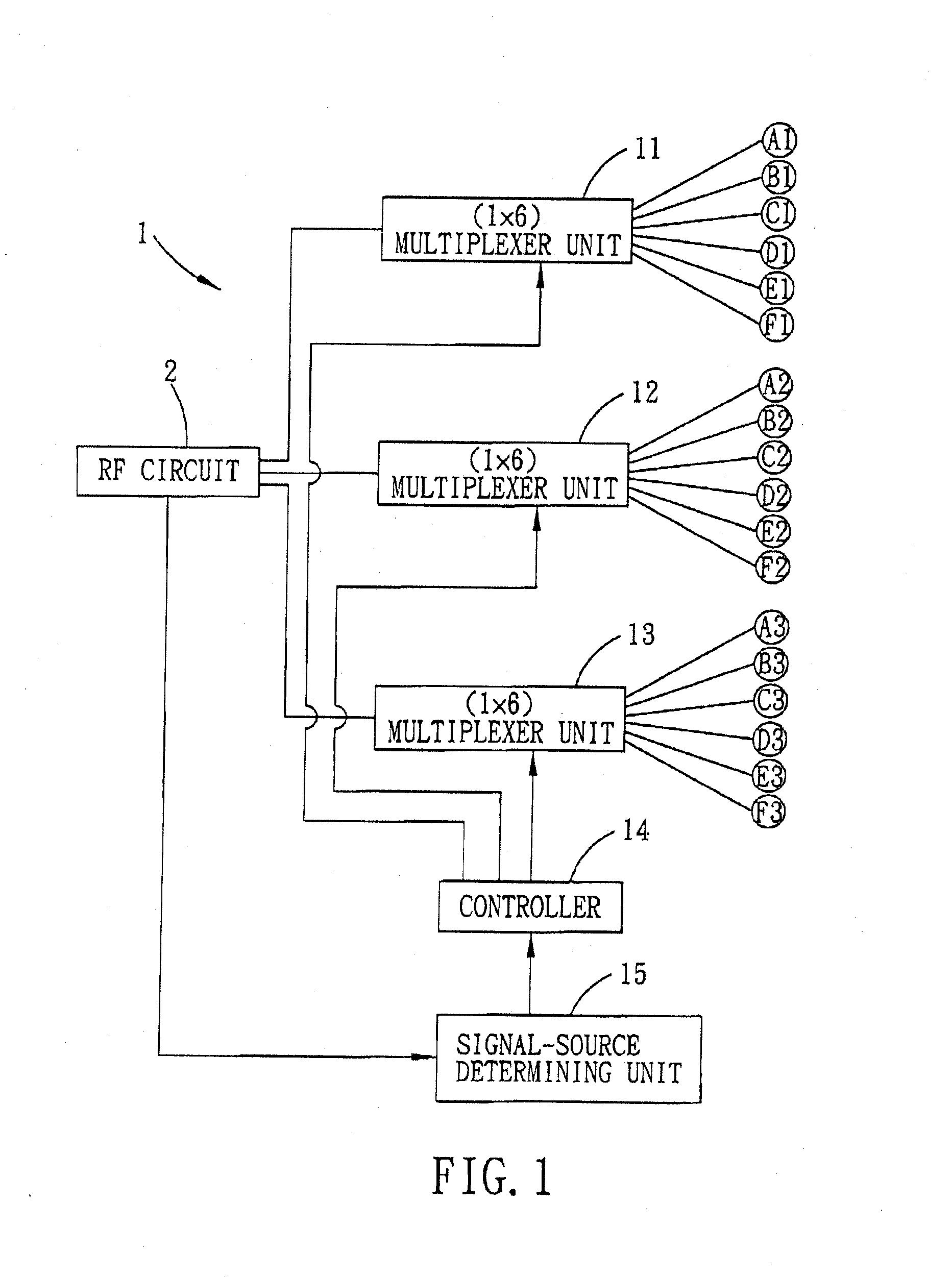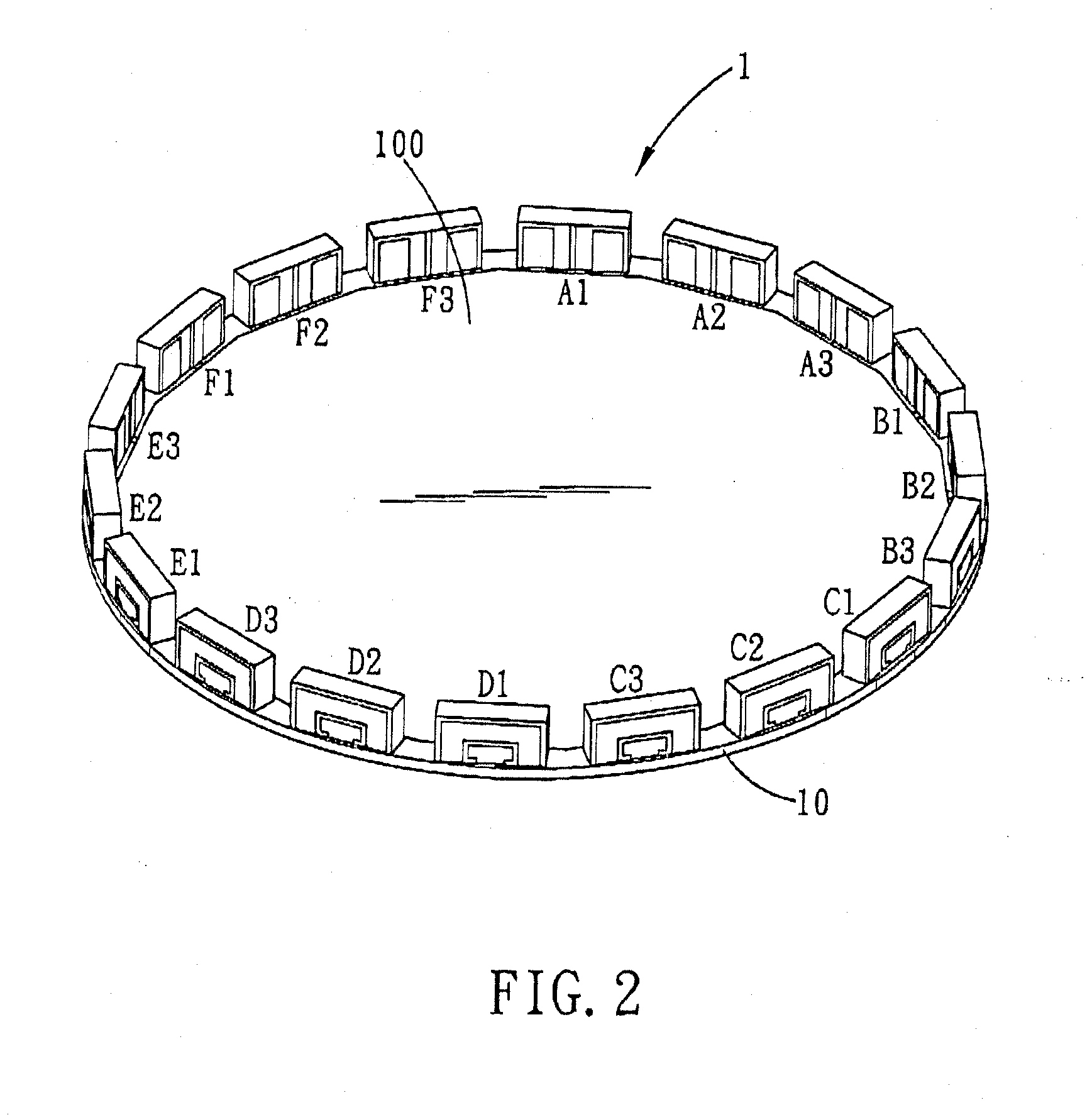Multiple-input-multiple-output antenna device
a multi-input, multi-output technology, applied in the direction of antennas, basic electric elements, electrical equipment, etc., can solve the problems of inability to achieve maximum data rates between 450mbps and 600mbps, the conventional smart array antenna system cannot utilize the multiple-input-multiple-output (mimo) technique for increasing throughput, and the inability of printed dipole antenna units to operate independently. achieve the effect of high directivity and high throughpu
- Summary
- Abstract
- Description
- Claims
- Application Information
AI Technical Summary
Benefits of technology
Problems solved by technology
Method used
Image
Examples
Embodiment Construction
[0033]Before the present invention is described in greater detail, it should be noted that like elements are denoted by the same reference numerals throughout the disclosure.
[0034]Referring to FIGS. 1 and 2, the first preferred embodiment of a Multiple-Input-Multiple-Output (MIMO) antenna device 1 according to the present invention is adapted to be connected electrically to a Radio Frequency (RF) circuit 2 for transmitting and receiving RF signals. The MIMO antenna device 1 includes a circuit board 10, a number (N) of antenna units ((N) is an integer not smaller than 6 and is a multiple of 3), and a plurality of (1×(N / 3))-multiplexer units. In the present embodiment, (N) is equal to 18, and the antenna units are divided equally into first, second, and third groups of antenna units (A1-F1), (A2-F2), (A3-F3). Each of the groups of antenna units is connected electrically to a corresponding one of (1×6)-multiplexer units 11, 12, 13.
[0035]The circuit board 10 is a multi-layer board, and ...
PUM
 Login to View More
Login to View More Abstract
Description
Claims
Application Information
 Login to View More
Login to View More - R&D
- Intellectual Property
- Life Sciences
- Materials
- Tech Scout
- Unparalleled Data Quality
- Higher Quality Content
- 60% Fewer Hallucinations
Browse by: Latest US Patents, China's latest patents, Technical Efficacy Thesaurus, Application Domain, Technology Topic, Popular Technical Reports.
© 2025 PatSnap. All rights reserved.Legal|Privacy policy|Modern Slavery Act Transparency Statement|Sitemap|About US| Contact US: help@patsnap.com



